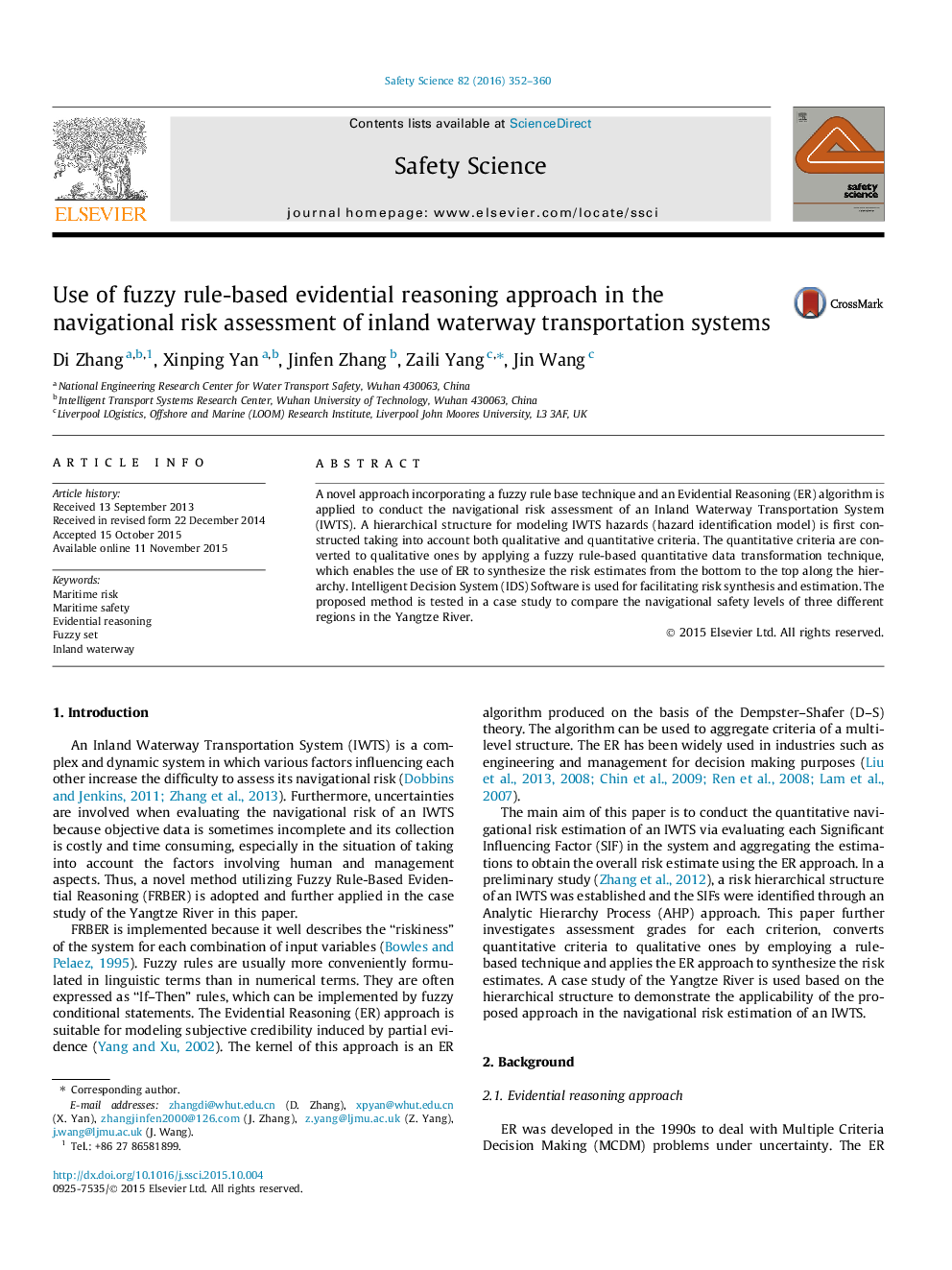| Article ID | Journal | Published Year | Pages | File Type |
|---|---|---|---|---|
| 6975617 | Safety Science | 2016 | 9 Pages |
Abstract
A novel approach incorporating a fuzzy rule base technique and an Evidential Reasoning (ER) algorithm is applied to conduct the navigational risk assessment of an Inland Waterway Transportation System (IWTS). A hierarchical structure for modeling IWTS hazards (hazard identification model) is first constructed taking into account both qualitative and quantitative criteria. The quantitative criteria are converted to qualitative ones by applying a fuzzy rule-based quantitative data transformation technique, which enables the use of ER to synthesize the risk estimates from the bottom to the top along the hierarchy. Intelligent Decision System (IDS) Software is used for facilitating risk synthesis and estimation. The proposed method is tested in a case study to compare the navigational safety levels of three different regions in the Yangtze River.
Related Topics
Physical Sciences and Engineering
Chemical Engineering
Chemical Health and Safety
Authors
Di Zhang, Xinping Yan, Jinfen Zhang, Zaili Yang, Jin Wang,
